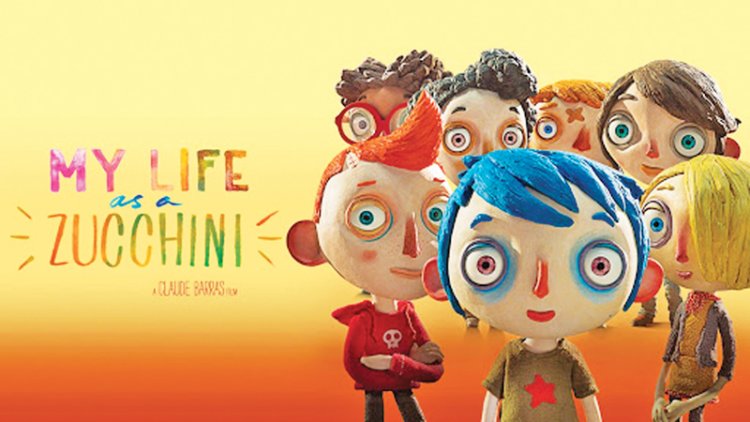My Life as a Courgette

‘My Life as a Courgette’ is a tale about undaunted bravery in the infant stages of life
In its animated structure, Barras brings forward a tale for children and adults alike with the children putting forward incessant questions for adults to ponder upon.
Icare’s life is harvested way sooner than he could have expected when he unintentionally causes his mother’s death. Nicknamed courgette (or zucchini, the summer squash that is harvested when still immature), Icare oddly finds it irksome when someone calls him anything but courgette. It is an identity forced upon him by his late alcoholic mother who could barely recall her child’s real name, but Icare carries that identity with him through his journey as an orphan in Claude Barras’ adaptation of Gilles Paris' 2002 novel Autobiographie d'une Courgette.
Treading on the familiar path of Céline Sciamma’s French drama Girlhood and Sean Baker’s slice of life film The Florida Project, Barras’ first feature is a consoling tale about a group of children who are the victims of toxic parenthood. Subtle yet expressive, Barras introduces Icare as an eight-year-old boy building castles with his mother’s empty beer cans and sketching his missing father’s image as a superman on a yellow kite. The mother’s constant abuse, her refusal to call her son by his actual name evokes little expression on the boy’s face; his silence says it all, a private struggle to hold it together and fit in.
It is the film’s minimalistic approach that creates the actual magic. (IMDb)
Following his mother’s death, Icare is introduced to a group of children who carry a similar burden of unexpressed pain. There is the red-headed Simon, a bully whose drug-addict parents forgot about their kid; Beatrice, whose migrant mother was sent back to Africa and rushed out of the orphanage every time a car passes hoping to see her by the door; Jujube whose “momma went completely nuts” and made him eat toothpaste, a habit he couldn’t get rid of; Ahmed, the “girlie who wets his bed” and hates the cops for imprisoning his father; and Alice, the one with a “real creep” of a father who gave her the scar she carefully hides behind the bunch of yellow hair.
Into this group of misfits enters the enigmatic, Kafka-reading, Camille, with a demeanour as veiled as Icare’s, suggesting the possibility of compassion between the two characters. Icare and Simon discover that Camille was witness to a murder carried out by her father: as Icare blurts, “It shines in her eyes, that she saw it all”. That single sentence sums up the truth of their collective predicament, of these children who have seen the harshness of life too closely too soon. It’s also screenwriter Sciamma’s quiet way of hinting at Barras’ broad frames, dim backgrounds and extremely bright characters.
It is a tale of abuse perceived from the child’s words. (IMDb)
An overwhelming sense of loneliness pervades the film. We see little sunshine or open skies, and the frames are a succession of lowlights and mute colours. But from time to time, the screen explodes with brilliant images of the children drenched in bright prominent colours, a smorgasbord of red, blue, yellow and orange and along with their dimmed gaze, strange long arms, and subtle expressions that convey an unbreakable bond with each other. A lot like Moonie, the child from Baker’s ‘The Florida Project’ who only behaves as a 10-year-old when she is told she has to leave her 17-year-old mother, we see little Icare coming to terms when he at last finds a room of his own. There are no tears, no emotion, not even dialogue, but Barras leaves the frame with a mark on the wall with 48” written next to it, indicating Icare’s height and the long life ahead of him waiting for him to grow taller, bigger, and hopefully happier.















































